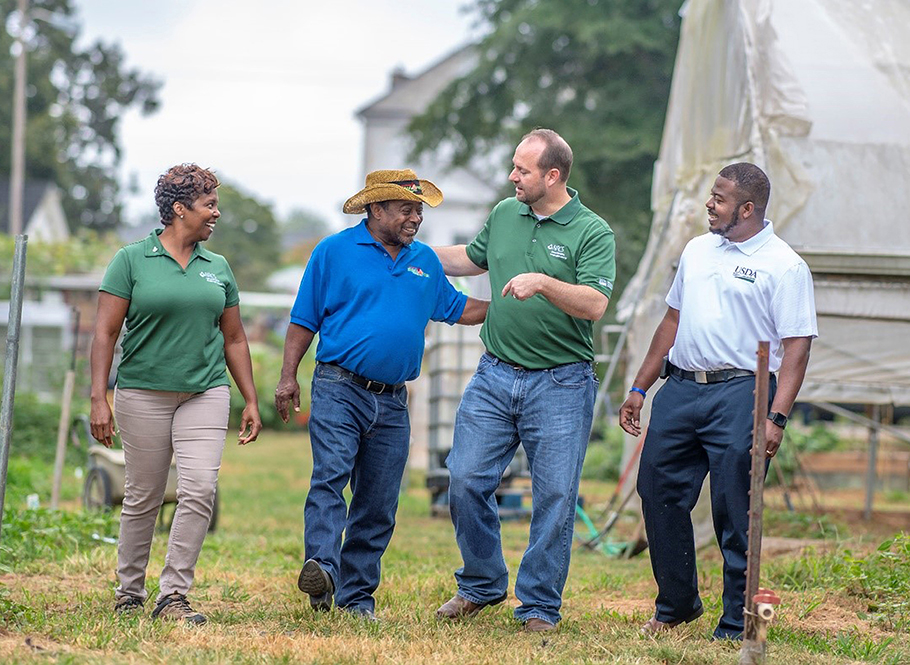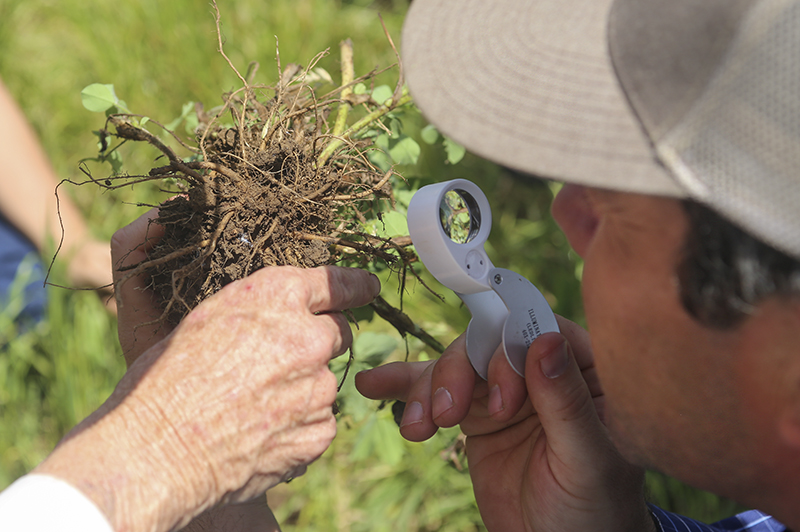
Regenerative Agriculture Technical Assistance Provider Training Program
A multi-partner coordinated effort to enhance conservation delivery in California.

Photo from the Natural Resources Conservation Service - USDA
The Need
California is the nation’s leading agricultural producer by total receipts, generating over $50 billion in 2019, far exceeding the number two leading state of Iowa ($27.5 billion) and representing 13.5% of U.S. total receipts. By sheer size and productivity, California has significant potential to contribute to working lands conservation efforts; however, there are several barriers to producer adoption of conservation practices, which can be addressed through systems-based approaches. These barriers include cultural stigma; lack of producer-driven knowledge sharing of the transition process and risk management; number of context-specific field demonstrations; and lack of knowledge and/or access to information, training and assistance with systems-based agricultural management. It is equally important that agricultural professionals providing assistance to producers (e.g., extension, RCD and NRCS staff) have access to the latest information and training. Currently, producers and agricultural professionals must piece together various workshops and online materials.
Purpose and Approach
This opportunity addresses these barriers through a comprehensive approach to outreach and training of producers, agricultural professionals, and the students who will become the nation’s next generation of agricultural leaders. The project design attends to the identified need for information and assistance to improve productivity through sustainable resource management strategies, and the need for strong community building and support to address real and perceived practical, cultural and economic barriers. Flexibility in the activities and delivery system provides access to multiple audiences, in which the interactions of these audiences are mutually beneficial. The approach is designed to foster conversation and collaboration among diverse stakeholders, creating conditions that support innovative and collaborative strategies to address current and future threats and opportunities for California agricultural production.
This set of programs is designed to:
- • Increase sharing and coordination of expertise among conservation partners
- • Increase access to comprehensive, systems-based technical assistance
- • Improve the creation and implementation of comprehensive conservation plans and results
- • Expand and support sustained adoption of conservation practices throughout California
Value-added Conservation Delivery, Reinforcing the NRCS Conservation Planning Process
The TAP Training Program offers a comprehensive and adaptive training opportunity that provides pathways for multiple layers of technical assistance and technical service certification, from addressing specific resource categories (for example, grazing management and forestry management) to developing Resource Management System (RMS) level conservation plans for farms, ranches and non-industrial timber lands.
The program draws on a combination of skills and knowledge gained by experienced conservation professionals and practical applications by producers, including individuals who have successfully implemented conservation plans and practices. Trainings are carried out in coordination with NRCS specialists.
- Integrates Conservation Activity Plans (CAPs) into the planning process to develop robust inventory, management and monitoring strategies that are co-created by TAPs and producers
- Provides practice-specific workshops to increase design and implementation expertise
- Facilitates more robust conservation planning to improve implementation outcomes


